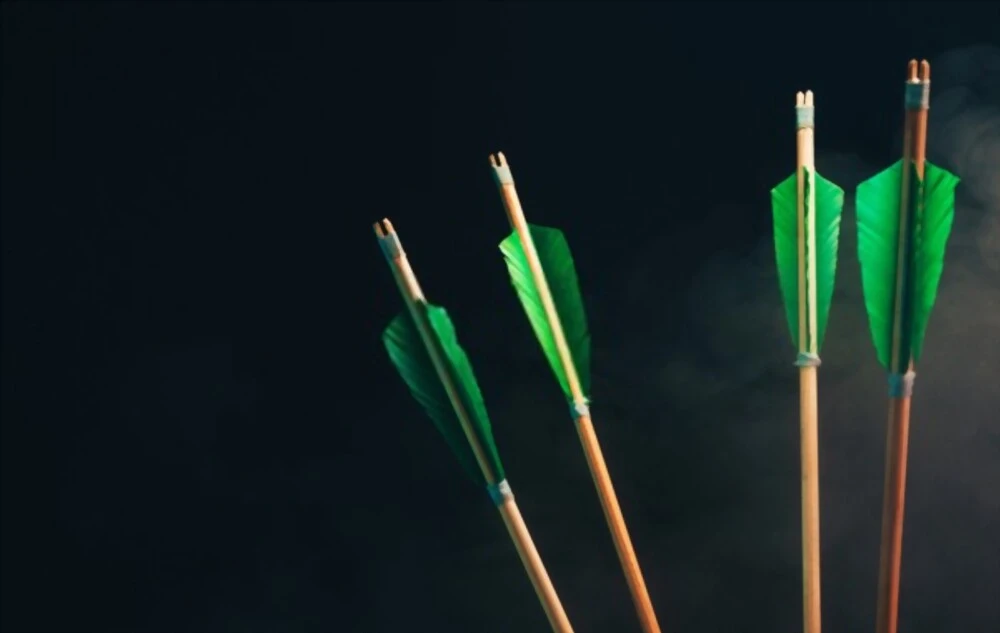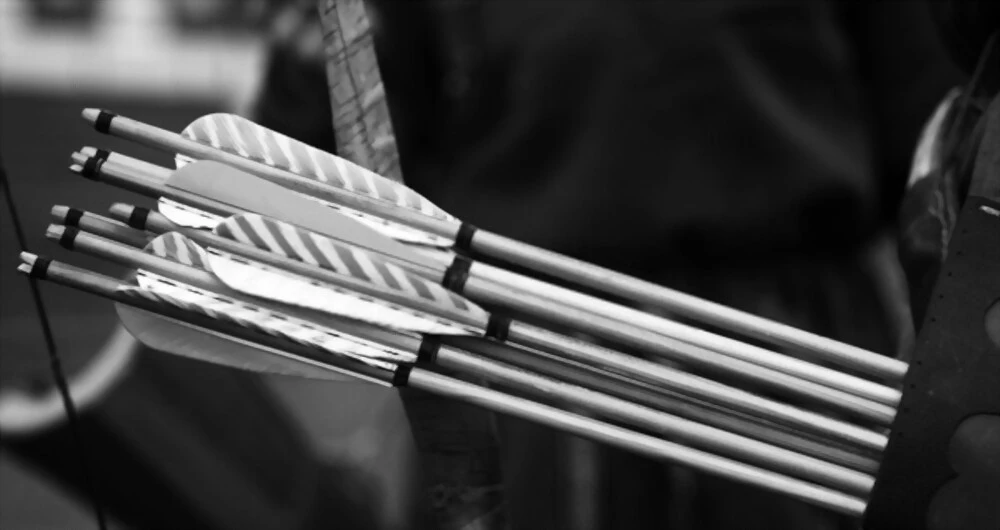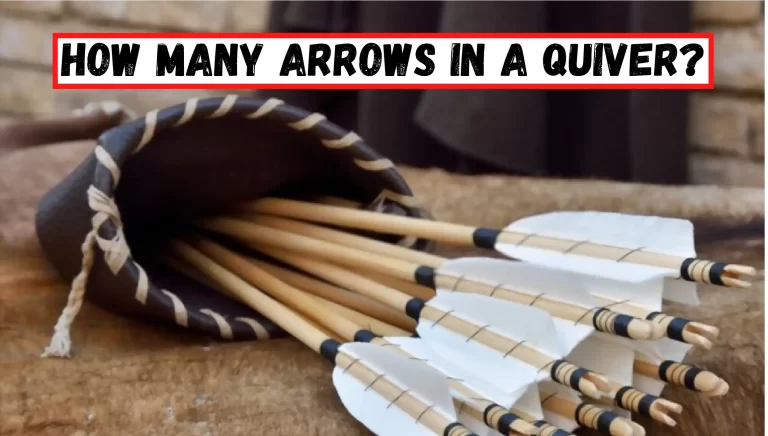How To Calculate Arrow Weight? – [The Right Way]
"As an Amazon Associate, I earn from qualifying purchases. This post contains affiliate links"
Are you an archer looking for the perfect arrow weight? If so, it’s important to know how to calculate arrow weight in order to get the most out of your equipment.
Knowing how much each arrow weighs can help with accuracy and consistency while shooting, as well as provide valuable insight into what type of bow is best suited for your style of shooting.
In this article, we will learn how to calculate the weight of your arrows and how it will help you.
So if this sounds interesting enough to you then keep reading!
How To Calculate Arrow Weight?

In order to calculate arrow weight, you must first know the weight of your arrow shaft, point, and nock. This information can usually be found on the product packaging or online.
There are different categories when it comes to weight of the arrow which include lightweight, middle and heavy weight arrows. Each one comes with its own set of pros and cons.
For instance the lighter arrows can fly faster and can group together more tightly. However, they are extremely difficult to play with.
In contrast, heavier arrows can fly slower but it can travel easily through wind by fighting against wind resistance. Besides that these arrows have more kinetic energy therefore, they are able to penetrate deep.
Here’s how to calculate the weight of the arrow.
Grains Per Inch (GPI)
The first method that allows you to accurately determine the weight of the arrow is to measure its grains per inch (GPI). This can be done by simply taking a ruler and measuring each inch of the entire length of your arrow shaft.
Once you have measured each inch, you will then need to multiply it by the GPI value which is usually listed on the product packaging or online. The result from this calculation will give you an accurate figure for how much your arrow weighs in grains.
This method is used as an industry standard when calculating the weight of the bow. It allows you to determine the weight of the shaft. This normally includes the length, diameter, wall thickness and shaft material.
However, it comes to GPI scale does not include nock, fletching or point weights.
Grains Per Pound
The grain per inch scale is often mixed with grain per pound scale however, there is a significant difference between the two.
The grains per pound scale measures the total weight of arrow by combining the overall weight of all components. This is usually done by weighing the entire arrow on a scale and then dividing it by 7000 (the grains in one pound).
This method typically provides more accurate results when compared to GPI. However, it is important to note that this method should only be used if you have access to a reliable digital or mechanical scale.
Front of the Center
The last but probably the most advanced version of weight calculation is the front of the center (FOC) method. This requires more knowledge and experience than the other two mentioned above but it is definitely worth learning as it provides very precise results.
The FOC method offers a way to determine exactly where the arrow’s weight should be distributed in order to produce optimal aerodynamics, accuracy, and stability. In short, this can help you find out if your arrows have an ideal balance or if they need to be adjusted.
To calculate FOC, the rule of thumb suggests that the total weight of the arrow must be divided by half and then add 10% of this number to get its FOC value. The higher this number is, the better control and stability you will have while shooting your arrows.
Factors that Affect Arrow Weight

Now that you have learned about the measurement of the weight of an arrow you might be interested in knowing what factors can affect it. Here are some of the common ones:
Draw weight of the bow
The factor that contributes to the weight of an arrow is the draw weight of the bow. A bow with a heavier draw weight will require a heavier arrow for better accuracy and penetration.
Arrow length
The longer your arrows are, the heavier they get as there will be more contact points between them and the nock, point, and fletching.
Nock & Point Material
The material used for the nocks and points plays an important role in determining how heavy or light your arrows will be. Generally speaking, carbon materials tend to be lightweight whereas metals tend to be slightly heavier.
You Can Read: What Is An Anchor Point In Archery? We barely discussed it.
Fletching Design
The design of fletching also plays an important role when it comes to arrow weight. Some designs are heavier and offer more stability whereas others are lighter and provide better speed.
Finally, it is important to remember that the weight of an arrow also depends on its environments such as temperature, humidity, wind speed and other weather factors. So make sure you keep these things in mind when calculating the weight of your arrows!
Calculating Optimal Arrow Weight
Finding the perfect arrow weight is a critical element of archery that can have an impact on shot accuracy and performance. The exact amount will vary depending upon what type of bow you’re using, as well as your personal shooting style.

Making the proper adjustment between arrow weight and draw weight for a bow is essential in order to achieve maximum accuracy and performance. Fortunately, archers can take advantage of online tools or seek specialist advice to find their ideal fit. By fine-tuning this element of your setup, you will be able to shoot with precision!
When calculating the efficiency of an arrow, several aspects must be taken into consideration such as draw weight, shaft stiffness (arrow spine), fletching mass (vanes or feathers on the back of the arrow), and point load (tip weight). All these components work together to accurately calculate performance.
By simply entering a few factors into the calculator, you can quickly determine what is the ideal arrow weight for your current setup. It’s essential to remember that this optimum weight may not bear true when shooting with somebody else even if they are using similar bows and arrows.
When selecting the ideal arrow weight for your bow, it is essential to take into account factors such as strength and shooting style, along with personal preference. To ensure you have found the combination that works best for your unique setup and techniques, experimentation is highly recommended.
Last Minute Thoughts!
So how to calculate arrow weight?
The total arrow weight consists of several components such as the draw weight, shaft stiffness (arrow spine), fletching mass, and point load.
You can use online calculators or seek specialist advice to determine the ideal arrow weight for your bow setup. Additionally, you can use FOC (front-of-center) to measure the balance and stability of your arrows.
All in all, finding the right balance between arrow weight and draw weight is critical for achieving maximum accuracy and performance with a bow. Don’t be afraid to experiment with different weights until you find what works best for you!
Good luck!
Related Articles:-
- What Sets a Crossbow Apart From Other Bows?
- How to Aim With a Compound Bow?
- How to Wear a Hip Quiver?
- How Does A Crossbow Arrow Compare To A Conventional Arrow?
- How Long Does It Take To Become A Professional Archer?
- How to Treat a Bruise from Bow String Slap?
- Can You Do Archery in the Rain?
- How Does an Archery Back Tension Release Work?
- How Has Archery Changed Over Time?
- How to Aim Crossbow Elden Ring?






![When Did Archery Become An Olympic Sport? – [You Need to Know!]](https://archerypick.com/wp-content/uploads/2022/12/2When-Did-Archery-Become-An-Olympic-Sport-768x436.webp)
